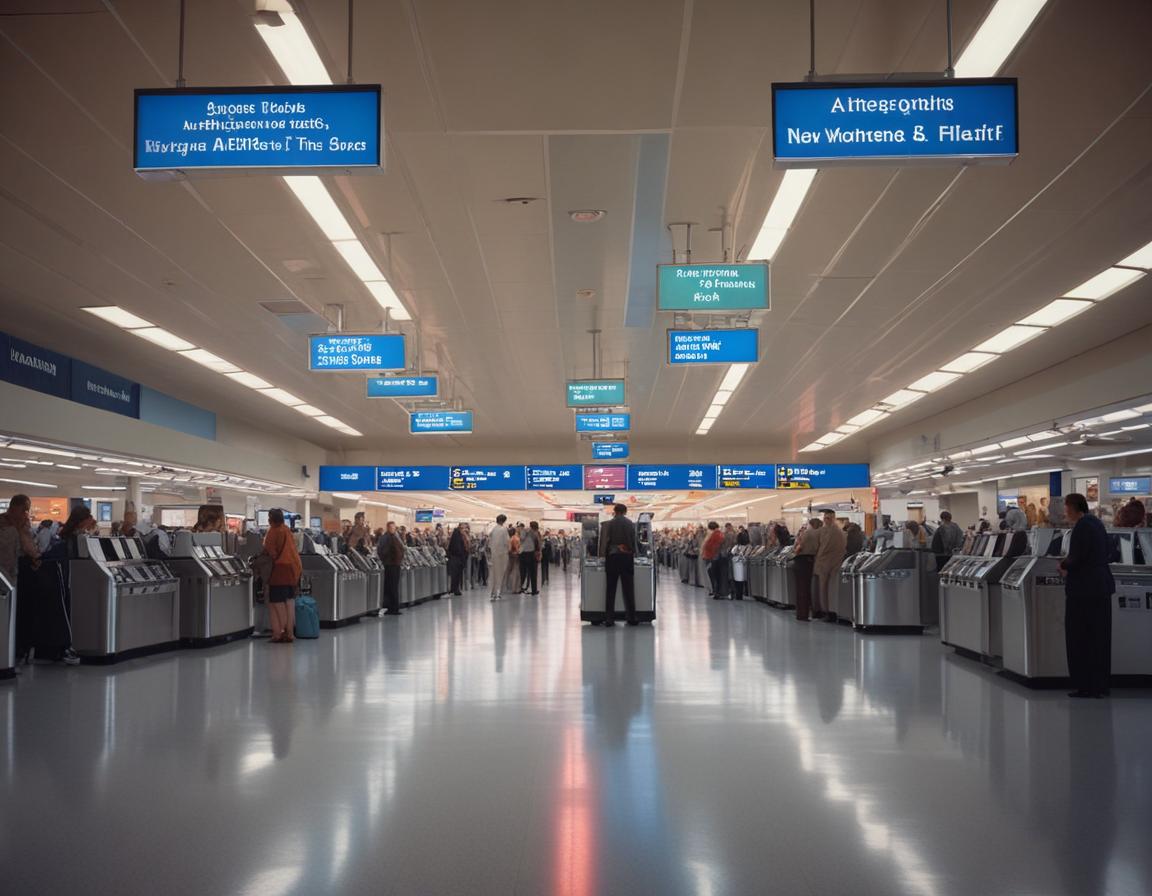Published on August 13, 2025
By: Tuhin Sarkar
Arizona joins US States California, Florida, Texas, Nevada, New York, and Illinois in facing a US tourism slip and more than billion risk from international decline. Arizona, California, Florida, Texas, Nevada, New York, and Illinois are now dealing with fewer overseas visitors, even as domestic travel stays strong. This US tourism slip is cutting into spending and creating a more than billion risk from lost international revenue.
This more than billion risk from international decline affects jobs, local businesses, and state economies. As Arizona, California, Florida, Texas, Nevada, New York, and Illinois adapt, the push to recover global travellers is becoming more urgent. Arizona tourism is slipping, and Flagstaff businesses are feeling the pinch. International tourism is down, and local shops rely on those visitors. This article explains what’s happening.
Advertisement
US Tourism Drop Hits Arizona Hard
Advertisement
The U.S. tourism industry brings in about a trillion dollars each year. Now it’s down nearly 10 %. International visitors are especially fewer. This drop could cost the U.S. up to $21 billion in tourism revenue. Arizona tourism suffers as part of that larger loss.
Arizona earns about $30 billion from tourism. International travellers make up 10–12 % of that. They stay longer and spend more. So fewer of them means big losses for local businesses.
Tourism Sustains Flagstaff’s Economy
In Flagstaff, tourism supports about 8,000 jobs. The economic impact is around $750 million. That includes hotels, restaurants and retail. It shows how vital visitors are to the local economy.
Smaller Arizona towns such as Page, Sedona, and Flagstaff rely on international tourism too. These visitors go to many places. That spreads the economic benefit. Coddington of Arizona’s Office of Tourism says foreign guests boost multiple communities.
Why International Tourists Matter
Local travellers make up most of Arizona’s tourism. That is good news. But international tourists bring extra value. They stay longer and spend more. In tougher economy times, their absence hurts towns like Flagstaff much more.
International visitors often book early. So when they delay travel, local businesses see slow demand at once. That leads to quiet shops and empty hotels. It becomes a ripple effect across the region.
The National Picture in 2025
The U.S. Travel Association says total travel spending is on track to rise by 3.9% this year, reaching $1.35 trillion. Domestic leisure trips are expected to hit 1.96 billion, up 2% from 2024. This growth at home is good news for many states, but it does not make up for the decline in foreign visitors. International tourism is set to fall by about 7% in spending terms, which equals a loss of around $12.5 billion. If the trend continues, the country could lose up to $21 billion in export revenue. This drop is linked to slower visa processing, higher travel costs, and global economic uncertainty.
Arizona – Strong at Home but Weak Abroad
Arizona’s tourism industry is worth about $30 billion a year. In 2024, it saw a record $29.7 billion in visitor spending and supported nearly 194,000 jobs. The state welcomes around 5 million international visitors each year, representing 10–12% of total arrivals.
In 2025, smaller destinations such as Flagstaff, Page, and Sedona are reporting softer demand from overseas. Flagstaff alone sees an annual tourism impact of about $750 million and supports 8,000 jobs. Local businesses say the summer started slowly, but August brought more international travellers from Europe.
California – Big Market with a Flat Forecast
California is the largest state tourism economy in the country. In 2024, it recorded $157.3 billion in visitor spending, supporting about 1.2 million jobs and generating $12.6 billion in state and local taxes. For 2025, the forecast is modest. Visitor spending is expected to rise only 0.5% to $158.1 billion, while visitor volume may drop by 0.7%. California’s mix of big cities, national parks, wine regions, and beaches means it can still draw strong domestic crowds, but the international softness is being felt.
Florida – Still the Volume Leader
Florida is a giant in U.S. tourism. In 2024, it welcomed a record 142.9 million visitors. In the first quarter of 2025, it attracted 41.2 million travellers, with about 92% coming from within the United States. Florida’s heavy reliance on domestic visitors is helping it weather the international slump. However, overseas arrivals are still an important part of the market, especially for attractions like Orlando’s theme parks and the cruise industry in Miami.
Texas – Riding a Wave of Growth
Texas tourism reached record levels in 2024, with $97.5 billion in visitor spending from 62 million travellers. The industry supports about 1.3 million jobs and has a total economic value close to $200 billion. The state benefits from a mix of business and leisure tourism. Cities like Houston and Austin draw convention and event visitors, while outdoor attractions bring in road-trippers from nearby states. In 2025, Texas appears to be holding steady, with no major drop in demand reported so far.
Nevada – Las Vegas Feels the Loss
Nevada’s tourism is built around Las Vegas, which is a top destination for both domestic and international visitors. In June 2025, Las Vegas saw 3.1 million visitors, down 11.3% from the same month last year. The fall is linked to fewer overseas travellers and a dip in some leisure segments. Even so, the city’s gaming revenue rose by 3.5% year-on-year, showing that those who do visit are still spending. Major events and conventions continue to draw large crowds.
New York – On Track for a Record Year
New York City nearly returned to pre-pandemic numbers in 2024, welcoming 64.3 million visitors and generating more than $6.8 billion in tax revenue. The tourism sector supports about 388,000 jobs. Projections suggest New York could surpass 67 million visitors in 2025. Domestic travel and the return of international business trips are helping the city rebound, though some overseas leisure markets are still slower to recover.
Illinois – Chicago’s Healthy Rebound
Illinois saw international visitors spend about $2.7 billion in 2023, a 47% jump from the previous year. Chicago welcomed 55.3 million visitors in 2024, creating an economic impact of $20.6 billion.
The city’s mix of cultural events, architecture tours, and sports attractions is keeping demand steady. There are no clear signs of a slump in early 2025, though trends will depend on summer and autumn event performance.
Hawaii – Strong Spending but Mixed Trends
Hawaii’s tourism revenue from the Transient Accommodation Tax for July 2024 to May 2025 reached $755.8 million, slightly below the same period in 2024. On Hawaii Island, visitor spending in June 2025 was $258.3 million, down 8.8% from June 2024 but still 25.5% higher than in 2019.
Visitors from the U.S. mainland are spending more, even as international arrivals remain uneven. Hawaii continues to be a high-spend destination thanks to its unique appeal and long-haul nature.
Colorado – A Shaky Start in 2025
Colorado saw strong growth in 2024, but early reports in 2025 point to a slower start for some destinations. Mountain resorts and outdoor recreation spots remain popular, but international visitors are a smaller share of the total market, making the state less exposed to global travel shifts.
Events and seasonal tourism will likely determine whether Colorado finishes the year stronger.
Why the International Tourism Slump Matters
Foreign visitors bring more than just numbers. They bring longer stays, higher spending, and wider travel patterns. They are more likely to visit multiple states, spreading their spending across cities and rural areas.
When international arrivals drop, the effect is felt in hotels, restaurants, museums, and small businesses. Some states can rely on domestic travel to fill the gap, but others lose a significant share of revenue.
The Strength of Domestic Travel
One clear positive in 2025 is the strength of domestic tourism. Americans are exploring their own country more than ever, driven by interest in experiences, festivals, and nature travel.
This shift creates opportunities for states to promote lesser-known destinations and seasonal trips. It also helps reduce the pressure on popular spots that risk overcrowding during peak seasons.
Opportunities for Recovery
To recover lost international business, the U.S. will need to make travel easier. This means faster visa processing, better airport experiences, and targeted marketing in key overseas markets. Competing destinations are already doing this, and the U.S. must keep pace.
States can also benefit from promoting events, sports, and cultural experiences that draw both domestic and international visitors. Coordinated campaigns between state tourism boards and local businesses can help boost demand.
U.S. Tourism Faces $21 Billion Risk as International Travel Slumps in 2025
The United States is one of the most visited countries in the world. Tourism is a key driver of the economy, creating jobs and supporting local communities. In 2025, the U.S. tourism industry is expected to bring in around $1.35 trillion. However, the latest data shows a serious challenge. International travel is down, and that could mean a big financial loss. This report explains the numbers, the trends, and the impact on the nation’s economy.
US Travel Spending Remains Strong but Uneven
According to the U.S. Travel Association, total travel spending in 2025 is forecast to rise by 3.9%, reaching $1.35 trillion. This shows that people are still travelling, especially within the country. Domestic leisure trips are expected to hit 1.96 billion, which is 2% more than in 2024.
The domestic market is proving to be a strong safety net. Americans are exploring their own country, booking road trips, weekend getaways, and family holidays. However, this growth at home cannot fully replace the loss of spending from foreign visitors.
The Drop in International Travel
International tourism to the U.S. is facing a sharp fall. The World Travel & Tourism Council estimates that foreign visitor spending will drop by about 7%, which equals a loss of $12.5 billion. If this trend continues through the year, the U.S. could lose up to $21 billion in export revenue.
In March 2025, the number of international arrivals fell by 14% compared to the same month last year. Tourism Economics has now revised its forecast, expecting a 9.4% decline in inbound visits instead of the growth they predicted earlier.
Why International Visitors Matter
International visitors stay longer and spend more than domestic travellers. They book more nights in hotels, dine in restaurants, and take guided tours. They are also more likely to visit multiple states during one trip, spreading their spending across different regions.
A drop in international arrivals is not just a problem for big cities like New York or Los Angeles. It also affects smaller destinations such as mountain towns, historic cities, and coastal resorts that rely on overseas visitors.
Positive Signs in Monthly Spending Data
Not all the news is bad. In February 2025, international visitors spent $21.8 billion in the U.S., which is almost 4% more than in February 2024. When combined with January, the first two months of the year saw a 6% increase in spending. That works out to an average of $745 million a day.
This suggests that while fewer people are visiting, those who do come are spending more. This could help soften the blow of declining visitor numbers.
Domestic Tourism: The Strong Backbone
Domestic leisure travel is the backbone of the U.S. tourism industry. In 2025, it is expected to account for more than $1 trillion in spending. This is close to pre-pandemic levels when adjusted for inflation.
The U.S. Travel Association says Americans are more willing to spend on experiences rather than material goods. Festivals, sporting events, and nature-based tourism are drawing strong interest. This means local tourism boards have a big opportunity to keep promoting in-state travel and regional trips.
State-by-State Impact
Tourism plays a different role in each state’s economy. Some states depend heavily on domestic visitors, while others rely more on international markets. Florida, California, and Nevada draw millions of foreign tourists each year, and a drop in arrivals there can mean large revenue losses.
On the other hand, states like Texas, Colorado, and North Carolina get most of their visitors from within the U.S. These states are more insulated from global travel trends but still benefit when overseas tourism is strong.
Forecast for International Arrivals
The National Travel and Tourism Office predicts that total international arrivals to the U.S. will grow by 6.5% in 2025, reaching about 77.1 million. However, this projection is at risk if the current decline in monthly arrivals continues.
Growth is expected in 2026 and 2027, but a slow rebound could mean lost opportunities in the short term. Travel policy, visa processing times, and global economic conditions will play a major role in how quickly foreign tourism recovers.
The Role of Policy and Marketing
Experts say that attracting more international visitors will require strong marketing campaigns and easier travel processes. Countries competing for the same travellers are offering faster visas, better airport services, and aggressive tourism promotion.
For the U.S., improving the entry experience at airports, reducing visa wait times, and boosting overseas marketing could help turn the numbers around. Public and private sectors need to work together to make the U.S. a more appealing and convenient destination.
Regional Benefits of Tourism
Tourism is more than just an urban industry. Rural areas, small towns, and national parks benefit greatly from both domestic and international visitors. These areas often see tourists as their main source of income. Hotels, restaurants, souvenir shops, and tour operators depend on steady visitor flows.
When international arrivals drop, it is not only the big cities that notice. Small communities feel it too, especially those far from major population centres.
Opportunities in Domestic Growth
While the international market struggles, there is still room to grow domestic travel. Road trips, camping holidays, and cultural tourism are trending among Americans. Seasonal travel promotions and event-based tourism can help fill gaps left by declining foreign arrivals.
By encouraging Americans to explore lesser-known destinations, the industry can spread the economic benefits across more communities. This also helps reduce pressure on over-crowded tourist spots.
The Bigger Economic Picture
Tourism is not just about leisure. It affects transportation, retail, and even manufacturing. Airlines, rail services, and rental car companies depend on strong travel demand. Shopping centres and local artisans benefit when visitors spend on goods.
What Arizona Can Do Next
Arizona’s tourism leaders urge local travel. They say: “Come here. Whether you live here or far away, you will have a great time.” That message aims at both state locals and nearby states. It underlines the value of home or regional tourism in tough times.
Local campaigns could highlight Flagstaff, Sedona, and Page. They can show families, hikers, and road-trip visitors how much they can enjoy the region. Promo offers and flexible bookings may boost travel again.
U.S. tourism in 2025 is a mix of resilience and challenge. Total spending is up thanks to strong domestic travel, but the decline in international visitors is a real concern. States like Florida and Texas are thriving due to their large domestic markets, while destinations such as Nevada and smaller Arizona towns are feeling the impact of the global slowdown.
If trends continue, the U.S. could lose up to $21 billion in export revenue this year. However, with smart policy, better marketing, and improved visitor experiences, the country has the tools to attract more travellers and keep its place as a top global destination.
Balancing Recovery with Planning
Some recovery is visible now. U.S. travel is picking up. Heat in Phoenix drives locals north to escape summer. That brings needed visitors to Flagstaff. International travel may also return soon.
Still, businesses must plan. They must prepare for slow seasons. They can diversify income. They can link with tour operators or online platforms. That way, they won’t rely solely on international bookings. They can target domestic travellers too.
Arizona tourism, especially in Flagstaff, is seeing a drop because fewer international visitors are travelling. Local businesses face challenges. Yet recovery is possible. Warming domestic travel, creative local campaigns, and flexible offers can help. The impact of the tourism drop is real—but so is the potential comeback.
Advertisement
Advertisement
Tags: Arizona, Arizona tourism decline, Canadian boycott, international decline, trade war impact
I want to receive travel news and trade event update from Travel And Tour World. I have read Travel And Tour World’sPrivacy Notice.
Wednesday, August 13, 2025
Tuesday, August 12, 2025
Wednesday, August 13, 2025
Wednesday, August 13, 2025
Tuesday, August 12, 2025
Tuesday, August 12, 2025
Wednesday, August 13, 2025
Tuesday, August 12, 2025




